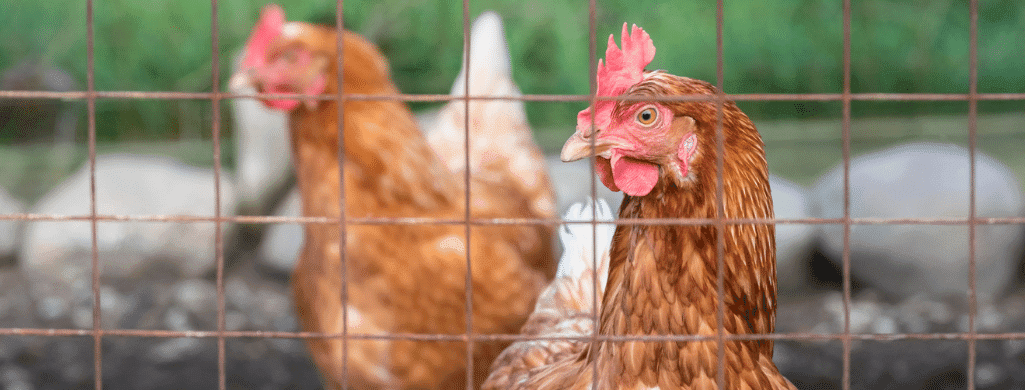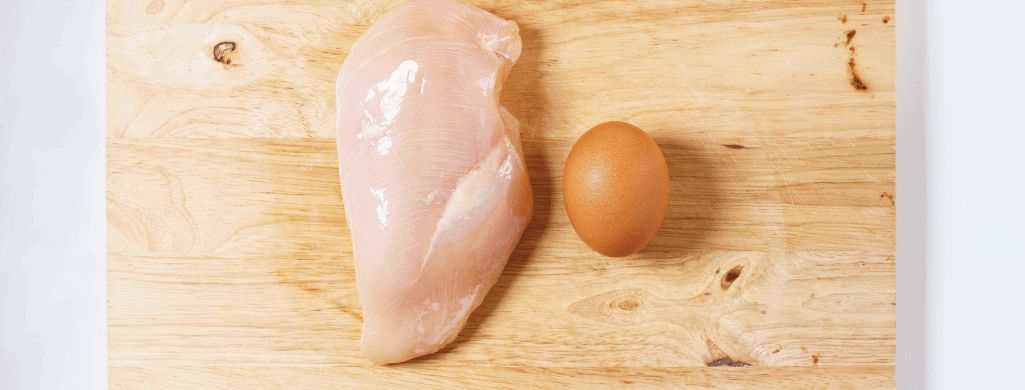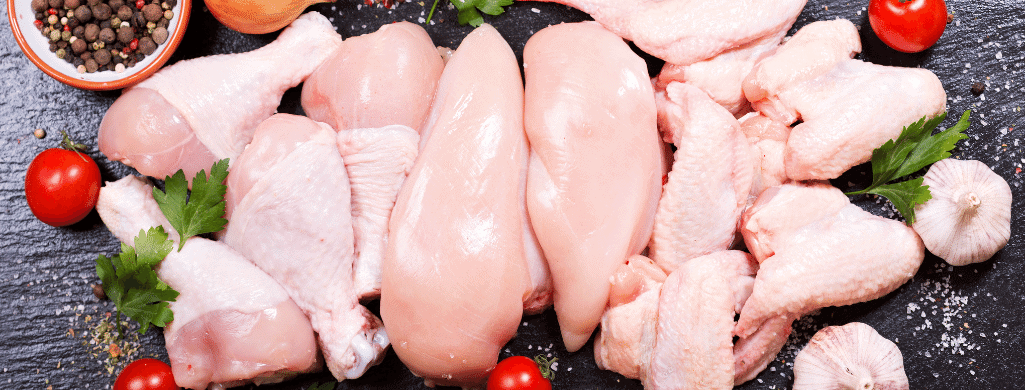Has your ISA Brown hen stopped laying, or is your rooster too aggressive?
If so, you have to decide if you will keep these chickens for pets or use these chickens for meat.
But can you eat ISA Brown chickens?
It’s possible to eat ISA Brown chickens, but they don’t taste great. ISA Brown chickens are excellent layers but do not make great table birds. There are other breeds to consider if you are looking for food birds.
Keep reading to learn more about what makes a dual-purpose chicken and why ISA Brown chickens are considered layers.

Table of Contents
ToggleAre ISA Brown Chickens Dual Purpose?
ISA Browns are amazing egg layers but don’t reach the sizes of broilers or dual-purpose breeds.
If you would like to eat one, that’s fine, but it won’t be worth the effort to process it.
If you do decide to turn your ISA Brown into dinner, choose a larger rooster rather than a hen. Hens are usually around 3.5 pounds, while roosters reach 4 pounds.
This is much smaller than the typical birds for meat production.
These hybrid chickens were developed for egg production, and this is where they shine. ISA stands for Institut de Sélection Animale.
This breed was developed in France in 1978, and their exact parentage is kept a secret.
There are speculations of White Leghorns and Rhode Island Reds being in the gene pool, which are both great egg layers.
ISA Browns lay brown eggs, and 60% of the commercial brown egg market comes from these birds.
This is because individual hens can lay more than 300 eggs in a single year. With thousands of these hens laying, it comes out to many eggs.
ISA Browns will live for 5 to 8 years.
After they stop laying eggs, these chickens make good pets. Even though you will only get 2 years of solid egg-laying from them, many owners keep them around afterward.
Unfortunately, ISA Browns have a heightened risk of kidney disease.
Because of this, some owners opt to use them as meat birds instead of pets after laying eggs.

What Is a Dual Purpose Chicken?
Over the years, different breeds of chickens have been bred for specific functions. The main purposes are egg production and meat.
Egg Layers
All breeds of chickens lay eggs.
After all, this is how they reproduce and carry on the species. However, not all breeds are equal in terms of laying frequency, egg size and laying longevity.
Breeds with better averages in these areas are often referred to as “layers” or “production breeds.” Top laying breeds include Leghorns and Rhode Island Reds.
A single hen can lay more than 300 eggs in a year.
Meat Birds
The other main purpose for these birds is for meat. Also known as broiler chickens, these fowl are typically larger in size.
They grow faster and have shorter lifespans to cut down on the costs of raising them.
Popular broiler breeds include Cornish Cross and Big Red Broilers. Many of these meat chickens weigh around 10 pounds.
This is twice the weight of your average chicken.
Dual Purpose
A dual-purpose breed is a combination of layers and broilers.
Basically, they lay enough eggs to make them good enough for egg production, but they are also large enough to be a tasty dinner.
A lot of these birds are processed or butchered after they are done with their peak laying years. However, a lot of them also stay in the flock as pets.
Dual-purpose breeds are popular among homesteaders and other chicken keepers.
Even if you have no plans on processing your birds after their egg-laying slows down, they are typically less flighty than strictly laying breeds.
This is because they have heavier bodies, making it harder for them to fly higher. This also helps keep them warm in cold weather.
Ornamental Breeds
Some breeds are not prolific egg layers or are big enough to be good for meat. Instead, they look pretty or unusual.
These ornamental breeds often have strange feathering or crests. They are great for exhibiting or just adding some diversity to your flock.
Ornamental breeds include Silkies and Houdans.

ISA Brown Temperament
An ISA Brown’s temperament is friendly and docile. They make great pets, especially if they are treated as such from a young age.
This breed of poultry makes ideal backyard chickens because of their calm temperament. Individual chickens have different personalities, though.
Some of these hardy birds will be more aggressive.
This is especially true if a hen goes broody and spends weeks nesting on her eggs. These prolific layers don’t typically go broody.
It does happen occasionally, but don’t expect many chicks from your flock. Chicken keepers of this breed report these docile birds being good mothers.
If you socialize this breed of chicken with your other pets, they will get along with dogs and other animals. They also get along well in a mixed backyard flock.
If you have aggressive chickens, your ISA Browns are at risk of being bullied.
It is recommended to let this hybrid breed have a free-range backyard setting.
They can handle being cooped up but prefer having time to scratch around in the dirt.
ISA Brown Health
For the most part, ISA Browns do not need much extra care compared to other chicken breeds.
As with any other type of chicken, make sure they always have access to clean water. Provide high-quality food.
Because of how many eggs this breed lays, they need extra sources of protein and calcium. Protein snacks and treats include nuts, seeds, and insects.
For calcium, grind up eggshells and sprinkle them into their feed.
Look at the nutritional label on their feed bag to get an idea of where they need extra help. All chickens need a varied diet to get all the nutrients they need.
Without enough protein, their bodies will not have enough energy to lay eggs and keep themselves healthy. A decrease in the number of eggs is likely due to a lack of essential nutrients.
Without enough calcium in their diets, hens will lay eggs with fragile shells.
They break easily. Sometimes hens will peck at and break their own eggs if they aren’t getting enough calcium.
ISA Browns are prone to reproductive tract issues, so keep an eye on signs of illness and other health issues. This breed lives an average of 5 to 8 years without developing issues.
How useful was this post?
Click on a star to rate it!
We are sorry that this post was not useful for you!
Let us improve this post!
Tell us how we can improve this post?
